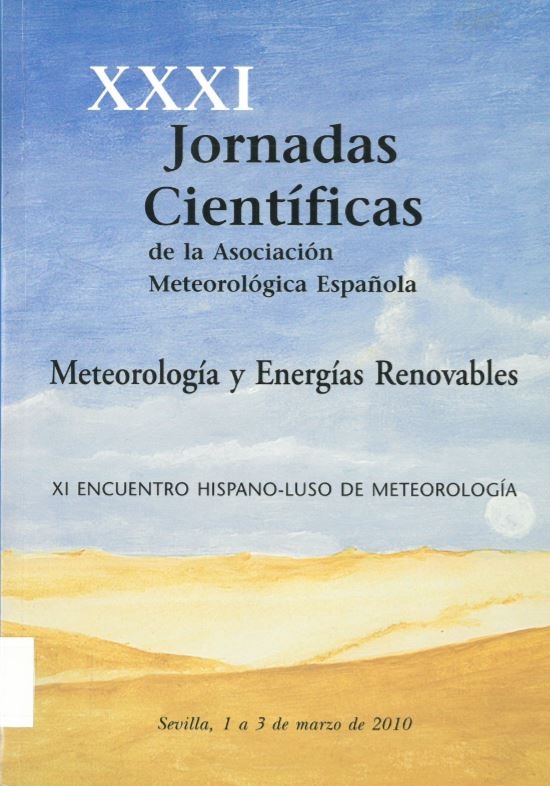MODELED SAHARAN DESERT DUST RADIATIVE EFFECTS OVER THE IBERIAN PENINSULA AND ATLANTIC OCEAN
Resumen
Since atmospheric aerosols may provoke important modifications in the Earth radiation budget, these particles play a major role in the global climate system. The aerosol effects are usually classified as: direct, connected to the scattering and absorption of radiation; semi-direct connected with absorbing aerosols that may be responsible for cloud evaporation; and indirect, due to the influence of aerosols on cloud microphysical properties and lifetime. The difference in net radiative flux at a specific level in the atmosphere, with and without aerosols, defines the so-called aerosol radiative forcing. Precise estimation of its magnitude gives crucial contributions for the assessment of the Earth’s radiation budget. However, the magnitude of aerosol radiative forcing and its contribution to global warming is still subject to considerable uncertainty (IPCC, 2007). Aerosols can have either positive or negative contributions to atmospheric radiative forcing, depending on their properties (Liao and Seinfeld, 1998; Kaufman et al., 2002, Santos et al. 2008).Citas
IPCC. 2007. Climate Change 2007: The Physical Science Basis. Contribution of Working Group I to the Fourth Assessment Report of the Intergovernmental Panel on Climate Change [Solomon, S., D. Qin, M. Manning, Z. Chen, M. Marquis, K.B. Averyt, M. Tignor and H.L. Miller (eds.)]. Cambridge University Press, Cambridge, United Kingdom and New York, NY, USA. Kaufman, Y. J., Tanré, D., and Boucher, O. 2002. A satellite view of aerosols in the climate system, Nature 419: 215-223. Lafore, J.-P., J. Stein, N. Asencio, P. Bougeault, V. Ducrocq, J. Duron, C. Fischer, P. Héreil, P. Mascart, V. Masson, J.-P. Pinty, J.-L. Redelsperger, E. Richard, and J. Vilà-Guerau de Arellano. 1998. The Meso-NH Atmospheric Simulation System. Part I: adiabatic formulation and
control simulations. Scientific objectives and experimental design. Ann. Geophys. 16: 90-109. Liao, H., and Seinfeld, J. H. 1998. Radiative forcing by mineral dust aerosols: sensitivity to key variables. J. Geophys. Res. 103:31637-31645. Santos, D., M. J. Costa, and A. M. Silva. 2008. Direct SW aerosol radiative forcing over Portugal, Atmos. Chem. Phys. 8:5771-5786. Wagner, F., D., Bortoli, S. Pereira, M.J. Costa, M. J., A. M. Silva, B. Weinzierl, M. Esselborn, A. Petzold, K. Rasp, B. Heinold and I. Tegen. 2008. Properties of dust aerosol particles transported to Portugal from the Sahara desert. Tellus, 61B:297-306.

